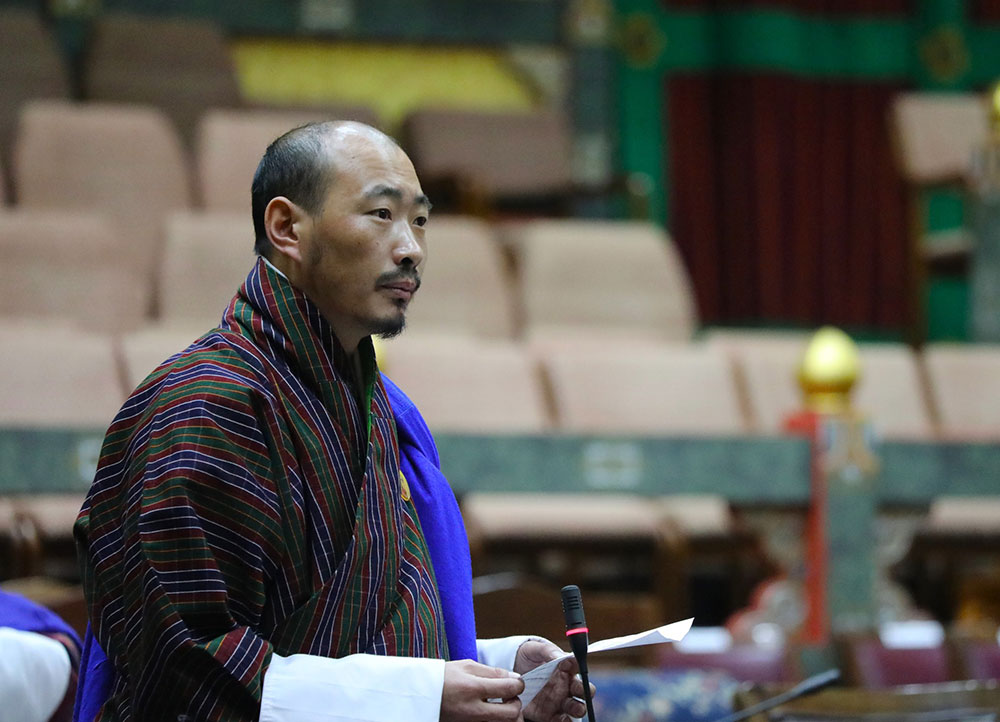… removes restrictions on livelihood activities for residents
Choki Wangmo
The National Assembly unanimously adopted the Biological Corridor Nine Bill of Bhutan 2023 yesterday.
With an area of 216 sq km, the biological corridor (BC-9) in the east connects Bumdeling Wildlife Sanctuary (BWS) and Sakteng Wildlife Sanctuary (SWS), covering six gewogs in Trashigang and Trashiyangtse.
As directed by the House on June 14, the Environment and Climate Change Committee presented the Bill yesterday, with changes to sections 12 and 14.
Section 12 mandates the Ministry of Energy and Natural Resources to carry out community livelihood and other economic-developmental activities, section 14 restricts the people within the BC-9 from carrying out six activities.
Local residents are not allowed to construct any infrastructure, clear for the transmission line, record documentary or commercial film or any sound recording, collect specimens, construct cable cars and ropeways, or all other activities that are restricted in State Reserve Forest Land.
As recommended by the House, section 14 has been removed.
MPs raised concerns about increased human-wildlife-conflicts, restrictions on development activities, restrictions on land use and harmonisation of the Bill with existing relevant Acts such as the Forest and Nature Conservation Act and Biodiversity Act of Bhutan 2021.
Doubts still lingered as to how the declaration of the biological corridor would support the livelihood of people living within 3.8 percent of the BC. A total of 363 households were found to be living in Bumdelling, Toedtsho, and Yalang gewogs in Trashiyangtse.
Stating that conservation projects cannot be implemented within the BC, the Athang-Thedtsho member Kinley Wangchuk called for clear-cut clauses to avoid challenges in implementation.
Mongar MP Karma Lhamo said: “Local residents depend on agriculture and livestock. They should have access to the market and other infrastructure to ensure that their livelihood is not disrupted.”
With infrastructure development, she believes that gungtongs could be reversed. There are 95 gungtongs in the area.
Drametse-Ngatshang MP Ugyen Wangdi said that the Bill has listed the benefits of conserving biodiversity but not how the BC will ensure livelihood opportunities for people in the area.
The BC is expected to ensure animal movement and genetic dispersion in BWS and SWS and benefit in securing conservation funds, among others.
Minister for Agriculture and Livestock Yeshey Penjor said that there will be negative impacts such as increased human-wildlife conflicts but the conservation funds obtained would help reduce the impacts. Installation of electric fencing to deter wild animals, for example.
“Infrastructure development can be carried out as planned,” he added.
As there are four major pilgrimage sites within the BC, he said that the local residents could benefit from tourism.
BC-9 is the first BC in the extreme east and will complete the Bhutan Biological Corridor Complex (B2C2). This will increase the country’s protected area coverage to 52 percent from 51.44 percent.
The BC is home to some of the globally-threatened mammal species like Royal Bengal Tiger, Asiatic wild dog, and Himalayan red panda, among others.
The Bill was tabled on June 9 and it will be sent to the National Council for deliberation.


